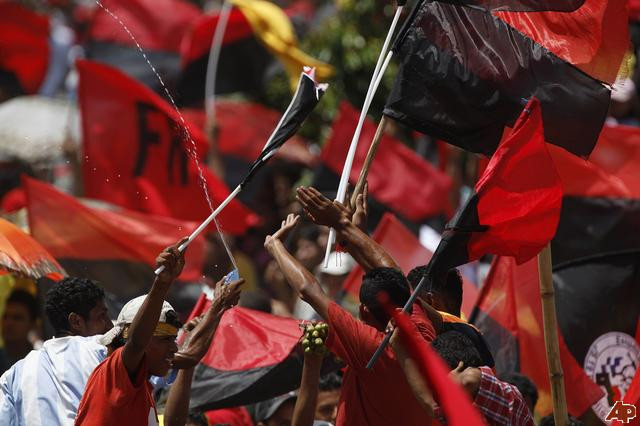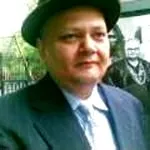I am not surprised that neither could see revolution on the horizon.
Another notable revolutionary posted on his Facebook wall today:
“The balance of forces in our society call for a protracted struggle to achieve the rule of law. Adventurism will be counter productive.”
I agree with 'protracted struggle' part of his assertion but wonder if invoking terms like 'adventurism' are appropriate.
Pakistan’s political environment does not particularly lend itself to revolutionary thinking – or rather revolutionary thinking requires inordinate ingenuity and courage, qualities with which Pakistani intellectuals are not abundantly endowed with.
Revolution can happen - it did in Nicaragua
We are caught in an intellectual inertia that fails to acknowledge the immediate need for revolution and real scars of political activists who seek assurances that next time around revolutionary effort will not fail. It is rather interesting that an effort is called ‘adventurism’ when it fails to yield desired result. But what do you call Sandinistas of Nicaragua?
Not many Pakistanis knew much about Nicaragua until civil war exploded there in 1978. At a time when Pakistan was going through it’s own turmoil, Nicaragua was experiencing a combination of business strikes, armed actions and neighborhood uprisings.
By the middle of 1979 as Zia-ul-Haq was tightening his grip with the help of Americans, but in Nicaragua an American backed dictator Anastasio Somoza Debayle was losing his reign. After the dust settled, the Sandinista guerrillas emerged with power and moderates accused them of betrayal.
For nearly 20 years, fighters of the Sandinista National Liberation Front (FSLN) had been preparing the way for revolution. As they came close to power, they were joined by other segments of society in what became a national insurrection against the Somoza regime. But it was the Sandinistas who set the stage for revolution and suffered to bring it about; without them, it would not have happened.
The story of what the Sandinistas were doing for 20 years while nobody was watching them - is a fascinating tale, unknown to most people outside Nicaragua.
Starting a revolution - students activists take charge
Many Sandanista leaders had joined the rebel front as student activists in the late 1960's and lived to see the 1979 victory. It was principally because of the courage and determination of these hard core activists - not because of business strikes, newspaper editorials or international pressure, that Somoza fell and revolutionary rule came to Nicaragua.
As their first subversive task, several student activists were assigned to help elect candidates from the leftist Student Revolutionary Front (FER) to campus offices. The candidates never stated publicly that they were in FER, never mind that they were Marxists! Bit by bit, students came out and were organized into study circles, which were then organized into teams, teams that later became cells of the Frente Sandinista.''
These old timers used similar organizing techniques in the Subtiava quarter of Leon, where they introduced the ideas of the revolutionary hero Augusto Cesar Sandino to natives who revered the memory of an ancient chief named Adiac.
Revolution does not mean life in a palace
Leaving behind the happy-go-lucky campus atmosphere and adapting to the rigors of life in the mountains was not easy for these middle class student activists. They have written how their clothes began to wear out, how hungry they were, the endless weeks of isolation when there was absolutely nothing to do except talk to each other.
Soon after the 1979 revolution, it became clear that the Sandinistas were determined to impose their revolutionary project and would not be deterred by the more moderate plans of their civilian allies. The businessmen and their friends were shocked; it was as if they expected the Sandinistas, after 20 years of fighting and organizing, after 20 years of being hunted down, tortured and killed, would, after defeating Somoza, admit that they were not properly trained for public administration and return to their villages and farms, leaving the middle class in power.
These student activists of 1960s and 1970s forged a spirit of iron, a spirit of steel, a contingent of revolutionaries bound with a granite solidity, a nucleus of people who were morally and mentally indestructible. They made sacrifices and took risks never even considered by opposition businessmen and politicians.
In Pakistan we have an abundance of political activists who are still optimistic – we have a contingent of revolutionaries but how do we bound them with a granite solidity? How do we become so strong – morally and mentally that we never stop trying.
It is when we stop trying our effort seems like ‘adventurism.’



COMMENTS
Comments are moderated and generally will be posted if they are on-topic and not abusive.
For more information, please see our Comments FAQ